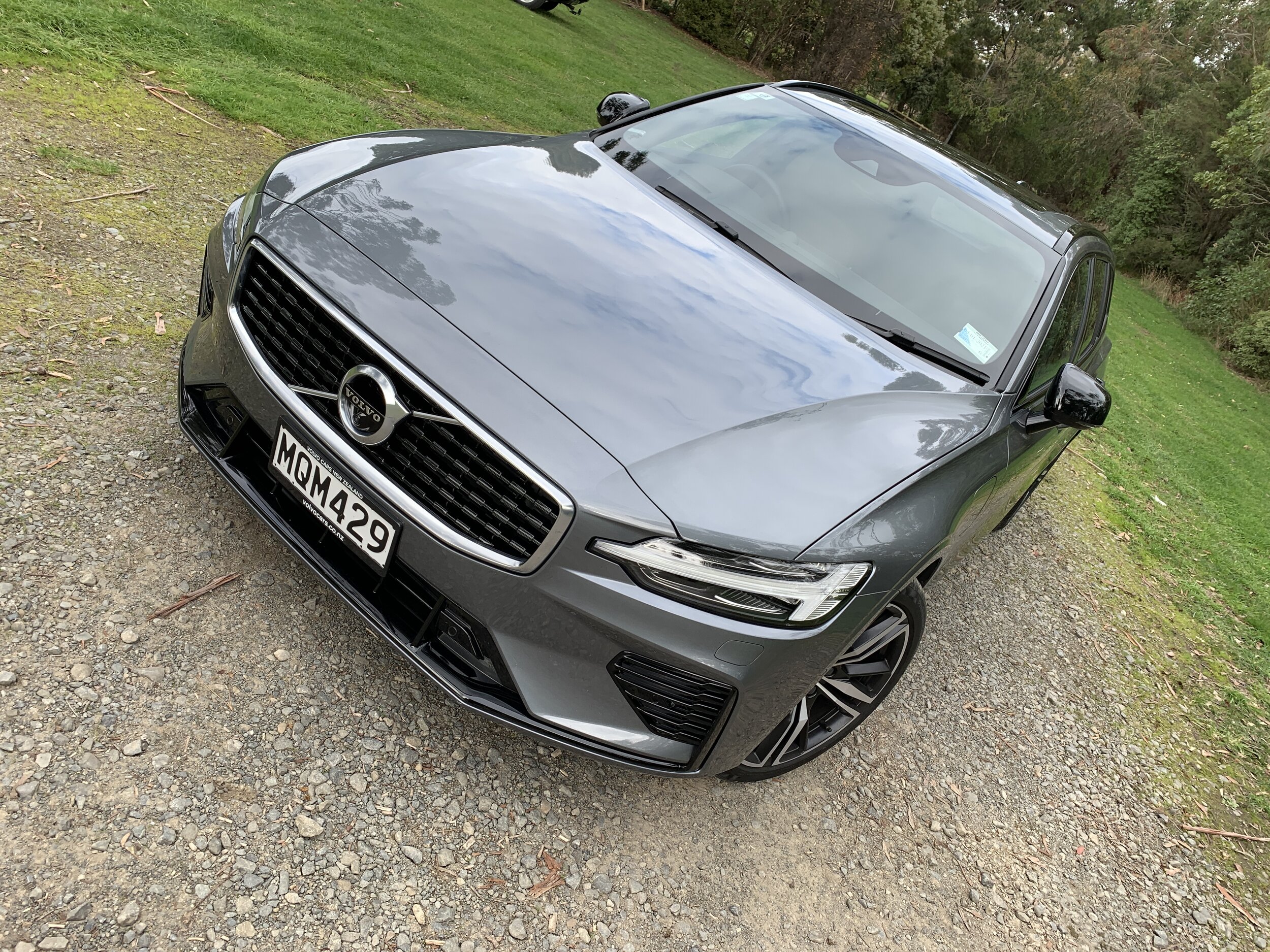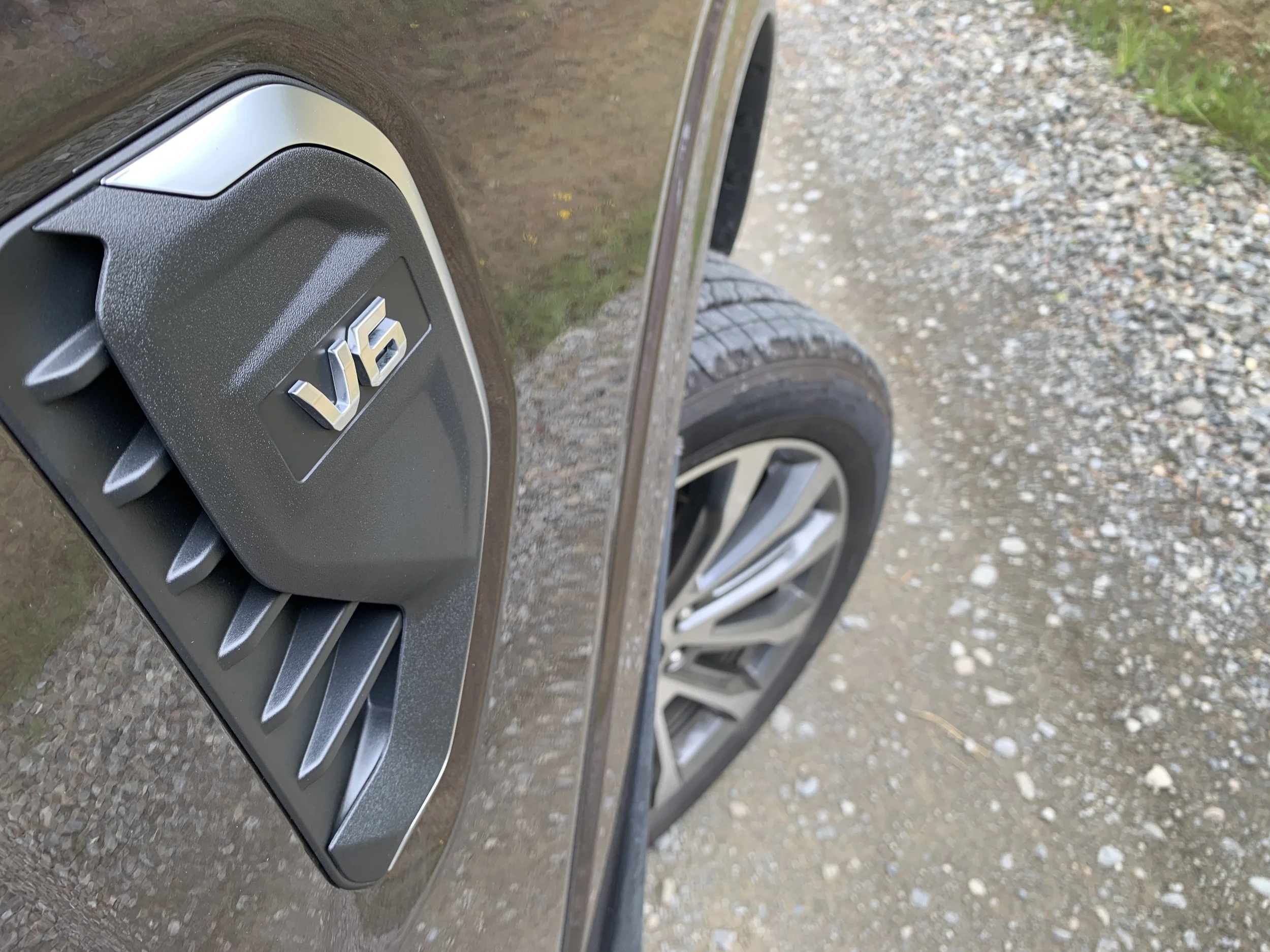Volvo V60 T8 Polestar: Plug-in plays well
/A second look at this sweet-looking Swedish sports wagon cements our sentiment.
Price: $114,900 ($121,400 as tested).
Powertrain and performance: 2.0-litre four-cylinder DOHC turbocharged and supercharged petrol engine with plug-in hybrid electric drive. 246kW/6000rpm, 430Nm/2200-5400rpm (Combined 311kW/670Nm). All-wheel drive. 2.0L/100km.
Vital statistics: Length 4761mm, height 1432mm, width 1850mm, wheelbase 2872mm. Luggage 390 litres. Wheels: 19-inch alloys with 235/40 R19 Continental Premium Contact6 tyres.
We like: Comfort, styling, innovative drivetrain engineering.
We don’t like: Fidgety suspension tune, type one recharging (and short household wall-plug cable).
WHEN it comes to citing a top-level European brand with leadership in drivetrain achievement, it’s all too easy to propose one of the usual German suspects.
After all, Audi, BMW and Mercedes do tend to make so MUCH noise about every new thing they bring to the market, right?
On the evidence presented by todays test car, really it’s the quiet Swede, Volvo, that deserves the spotlight. Definitely so on strength of the mechanical package delivered with the new flagship edition of its V60 mid-sized station wagon.
Turbocharged, supercharged, petrol, electric and a blend of both, driving through two wheels or four: That’s a heck of a drivetrain, right?
Almost every part of that recipe is special and rare to find elsewhere in motoring, even the elements that – to Volvo at least – are a bit old hat, now.
Actually, to be fair, the Swedes are the third marque I can name that has sought to combine the choice of forced induction between two philosophically opposed setups – turbocharging, to achieve a revvier, higher-strung sort of boost (thanks to exhaust gases), and supercharging, to deliver a gruntier and lower-end power enhancement (courtesy of crankshaft inertia).
As far as I can tell, the combo achieved its first successful cameo with Lancia's Delta S4 Group B rally car in the mid-1980s, which trickled down into a roadgoing version, and more latterly came in a Volkswagen Polo that sold briefly here.
Even so, it’s fair to suggest Volvo has gone further with it. The result of Chinese owner Geely’s $300 million investment in the Skovde engine plant has resulted in a particularly intense involvement that achieves with the test car’s 2.0-litre inline four-cylinder T6 engine standing out as a bright spot of innovation.
The initial outcome from combining turbocharging and supercharging was to tick a best of both possible worlds – great zonk and also commendable economy (and claim of a first in its class to deliver more than one kiloWatt per gram of CO2 emissions). That box was first ticked a couple of years ago. Now the powertrain is up to its next level, with the supplementary positive of an electric backup.
How it all enacts in daily operation is intriguing. For one, there’s such a broad and muscular spread of power; the engine when acting in isolation, which is mainly when the performance-first Polestar drive mode is enacted, creates discernible low-end supercharger grunt that starts to plateau around the 3000 rpm mark - right around where the turbo kicks in.
You’d easily be fooled into imagining there’s a much larger powerplant lurking under the bonnet. Depending on your enthusiasm with the go pedal, you might twig to brief moments of almost imperceptible interruption between one ‘spinner’ handing over to the other, yet overall it demonstrates that there is a way for these enhancers to peacefully co-exist.
And that’s only half – or, if you have a heavy right foot – two-thirds of the story here, because on top of this is the electric ingredient whose inclusion identifies externally with a new title - T8 'Twin Engine' - another 'fuel filler flap' on its front wing, for the Type 1 charging port, internally with some hybrid-related displays and on the road with … well, everything from silence to surge, depending on how it happens to be interacting.
Ostensibly, in its Green mode – enabled most effectively by switching a selector to Eco - the 10.4kWh battery pack that feeds the electric motor (that drives the rear wheels) will allow you to achieve up to 49km on electric power alone, which should make it ideal for commuters who can charge it both at home and the office, day in, day out.
Or is it better to save that extra inertia for Polestar? Hmm. With both forms of propulsion pushing forward together, it’s a serious mover. Zero to 100kmh crops up in under five seconds – pretty scintillating when bearing in mind this car weighs in at a fraction under two tonnes – and as all grunt transfers as grip thanks to the traction-maximising effort of its four-wheel-drive (resulting from the electric motor being mounted to the rear axle), there’s real push-back surge.
All that’s missing from this almost-V8 oomph is an almost-V8 soundtrack, though the noise as it goes about its business is intriguing in its own right; a blend of four-cylinder engine grumble overlaid with a whine of supercharger and electric motor noise.
There’s no assurance of an absolutely free lunch here. As with anything that uses batteries, the harder the power hit, the faster the depletion rate. Just a few energetic starts and foot-down accelerations when moving will slash the EV range significantly.
And while the battery is never as wholly exhausted as the indicator shows – which reveals in it always having enough to enable silent movement from starting off – it’s a balancing act if you want to use it to scurry around without using any petrol at all for a reasonable distance.
Yet it’s not that much of a challenge. I got used to seeing just 3.5 litres/100km on a daily mixed condition and speed test run; I wasn’t thrashing, but neither was a tender-footing. Get in the habit of plugging it in whenever there’s a chance and you’ll always have some zap to help the petrol-fed zip.
Beyond the powertrain, you’re into more regular Volvo territory, which means a very nice cabin presentation, some of the best front seats in the business and a decent specification to warrant its premium market placement, including the nine-inch Sensus touchscreen satnav, the 12.3-inch digital instrument cluster, a powered tailgate, rear parking sensors, two-zone climate control, cruise control with a speed limiter and more.
High-end station wagons are relatively rare nowadays, not least in a property sporty format, and anyone who has become utterly convinced by car-like SUVs will complain, first, about how low this car is to get into and, second, about how firm-riding it is.
Both are factors you just to need accept as part of the overall theme. It’s true, nonetheless, that R-Design Volvos are quite crunchy in their firmer-than-standard suspension tune and as gorgeous as the big wheels with low profile tyres look, they’re also going to unavoidable transmit a bit of road patter through on scarred surfaces.
To be fair, though, we need to accept that our road surfaces are pretty poor and that suspension engineers who tune the car for far more important markets do so in knowledge that those places have smooth tarmac surfaces.
Even so, the damping control was pretty good, keeping vertical movements of the body to a minimum, and it across as pretty well-sorted in the cornering department, with clean steering, lots of grip and minimal body lean to work around. If it is not as thrilling to drive fast as the obvious German equivalents, neither is it too far from being a threat to them.
The T8 update demanded adoption of brake-by-wire; meaning the brake pedal sends a signal to a computer and the computer translates that into braking power. We’ve been down that road before with varying degrees of success. Some other systems that rip out the vacuum booster and replacing it with an electrically powered hydraulic pump can be quite grabby.
However, in general use, the Volvo’s stoppers meet the aim of providing a linear feedback a smooth transition between regenerative and non-regenerative braking. And there’s certainly plenty of stopping power.
The T8 drivetrain also affords in a taller and robust-looking XC setting and I imagine that’ll be the one more buyers gravitate to, simply because SUVs are just more in vogue. In a way, that might enhance the V60’s standing with those who still prefer orthodox wagons; in adding a degree of ‘rarity’ value for a car whose general styling and R-Design furnishings lend wonderful kerbside presence.
Bunging an EV drivetrain and battery into an orthodox design always demands some give and take; by shaping this into a T-design is clever as the main part spans under the back seat, with the vertical running forward into what would be a driveshaft tunnel if it had an orthodox all-wheel-drive. That provision ensures the boot space remains decent. However, it also effectively makes this a four-seater, as the central tunnel is quite and wide and high.
There are a couple more quirks beyond that. Engaging Reverse after being in Drive demands a double-tap movement else it’ll revert to neutral, which a bit odd. Also, the recharging cable for plugging into home supply is very short, there’s no logical place in the boot designed to stow it (and, if there is a bag, it had been ‘repuposed’ before the car arrived) and also replenishment by this method is so achingly slow off a three-pin plug you really need to upgrade to a proper home charger or roam around to find a local utility. In that respect, head down to your local mall. A lot of free-use public EV setups are still configured for Type 1 plugs and they’re generally located in shopping centres. But how long will that remain the case? Having this plug type seems a step behind where most other brands are going and it’s in fact interesting to see that, in some other markets, the car appears to come with a Type 2 set-up.
Beyond that, though, it does seem a pretty strong all-rounder; a car that blends the sporty side of its nature very nicely with its practical facets with the potential of super-low running costs, if you’re sensible in how and when hybrid drivetrain is engaged. If you leave it in hybrid mode then it really is quite brilliant in how it apportions the best elements of the petrol power and the electric motor. The world’s hybrid king, Toyota, could learn from this car.
A car that has come about purely as result of Volvo determining to distance itself from diesel deserves recognition from eco-conscious buyers who might have already been attracted by the Swedish manufacturer’s reputation for being a frontrunner in safety and solid design. Knowing that there’s nothing else quite like it in the market must also stand as an interest point.




















